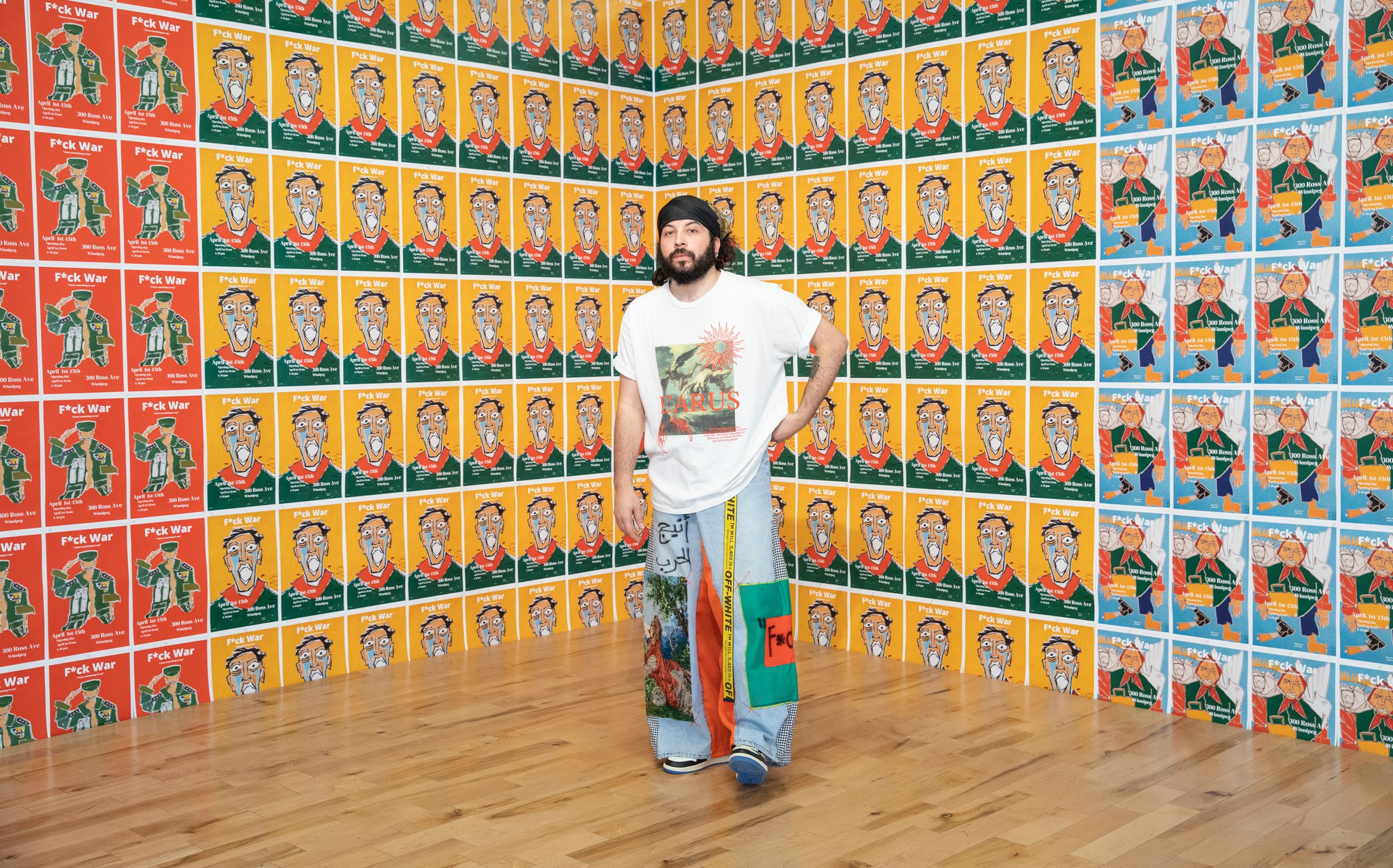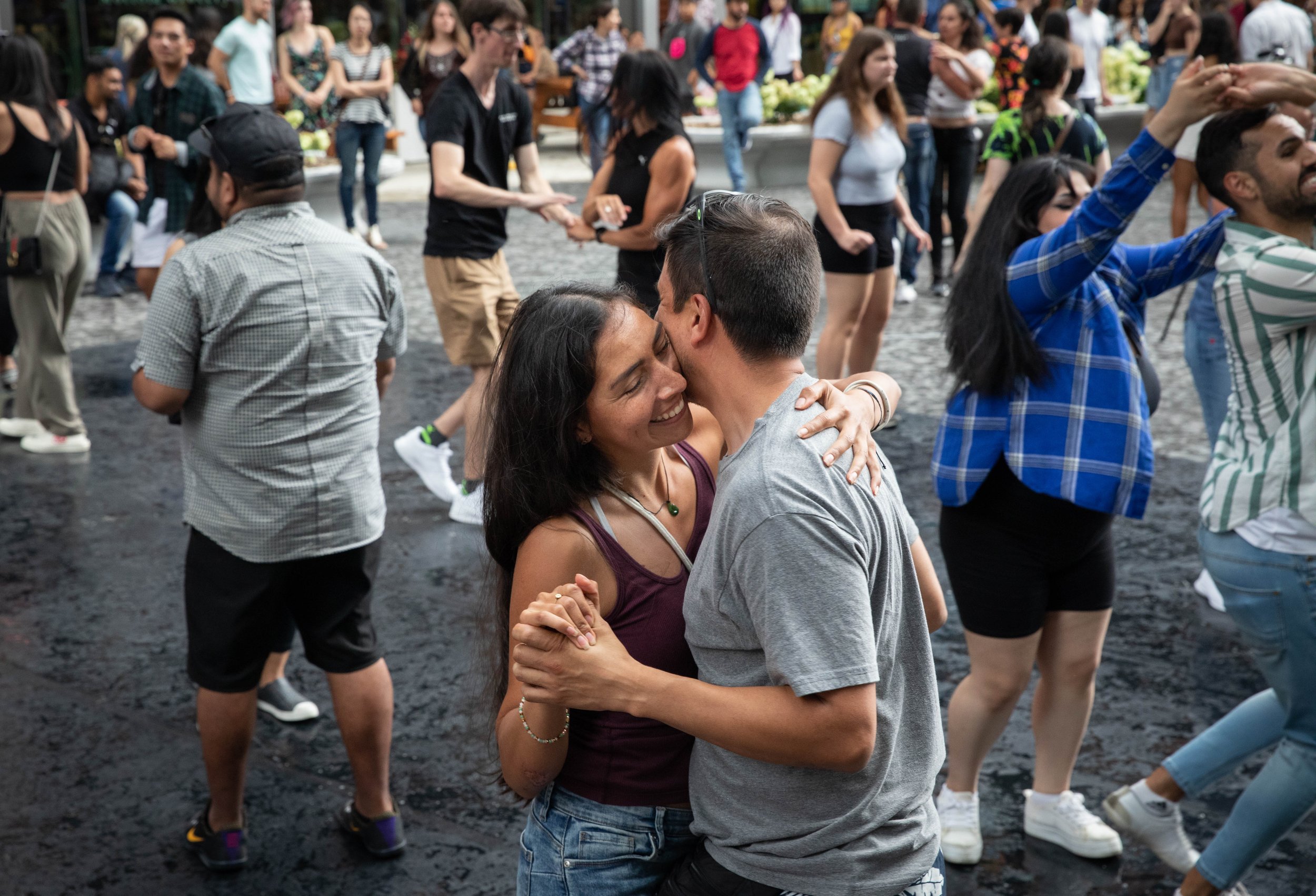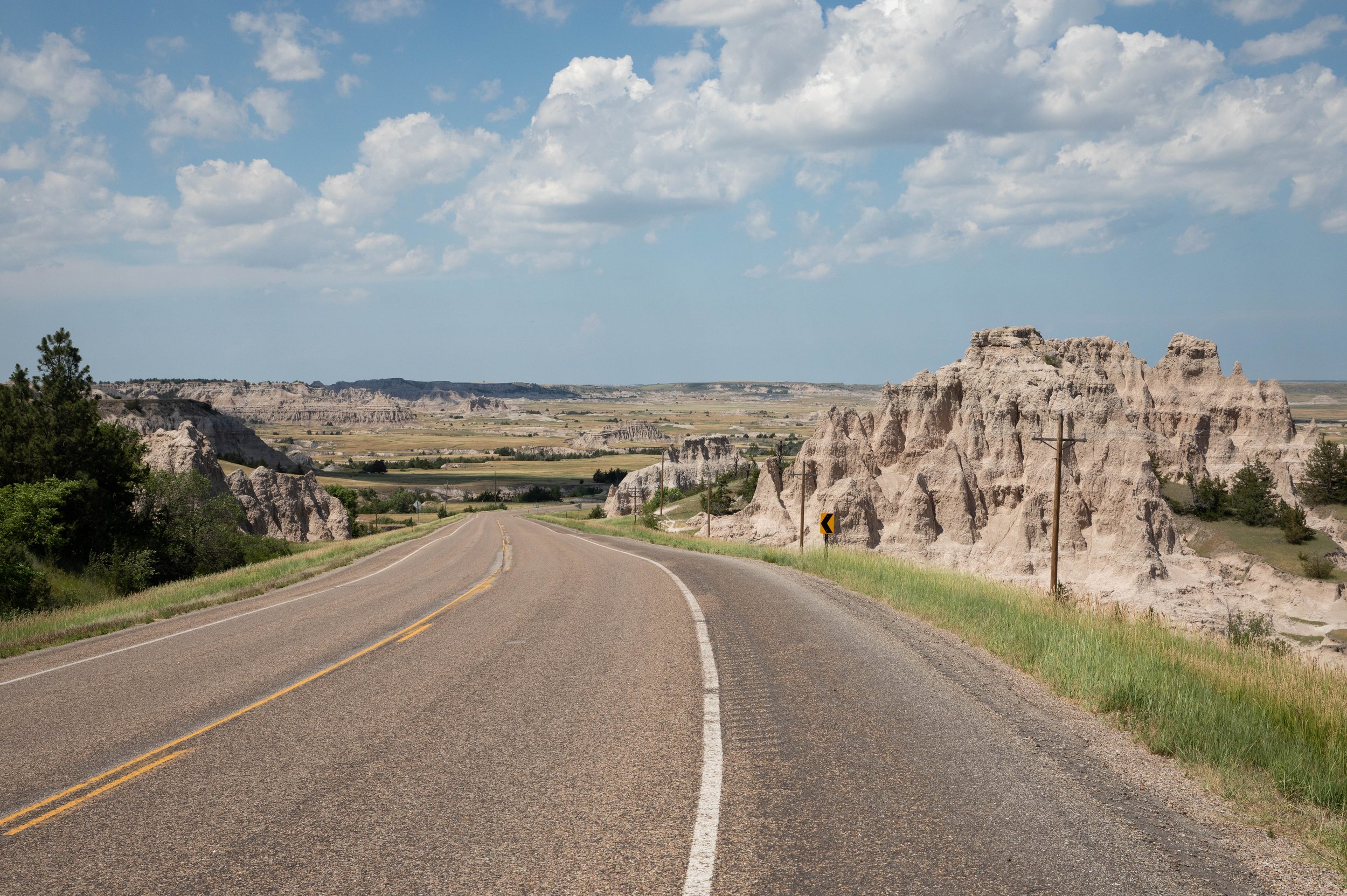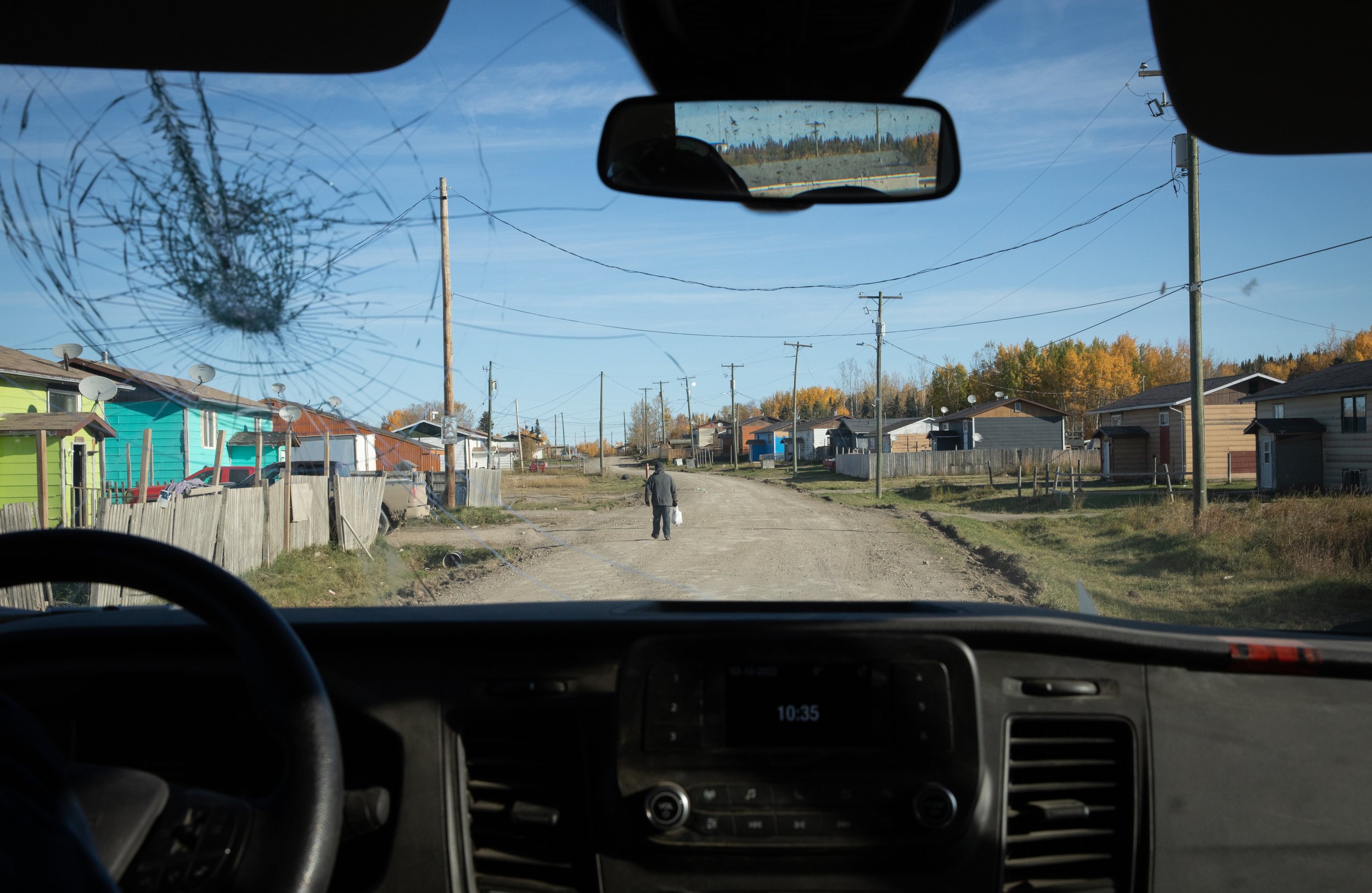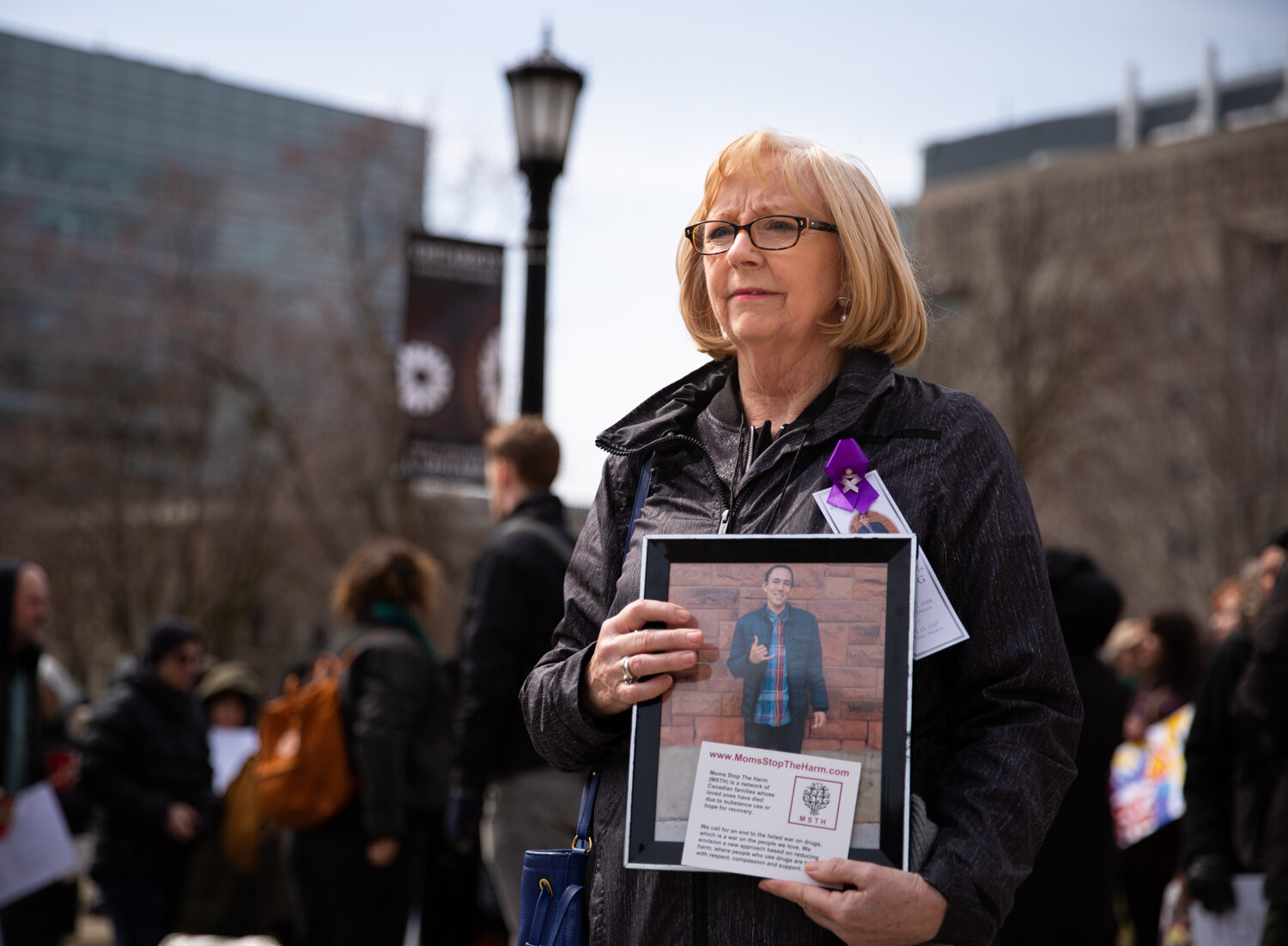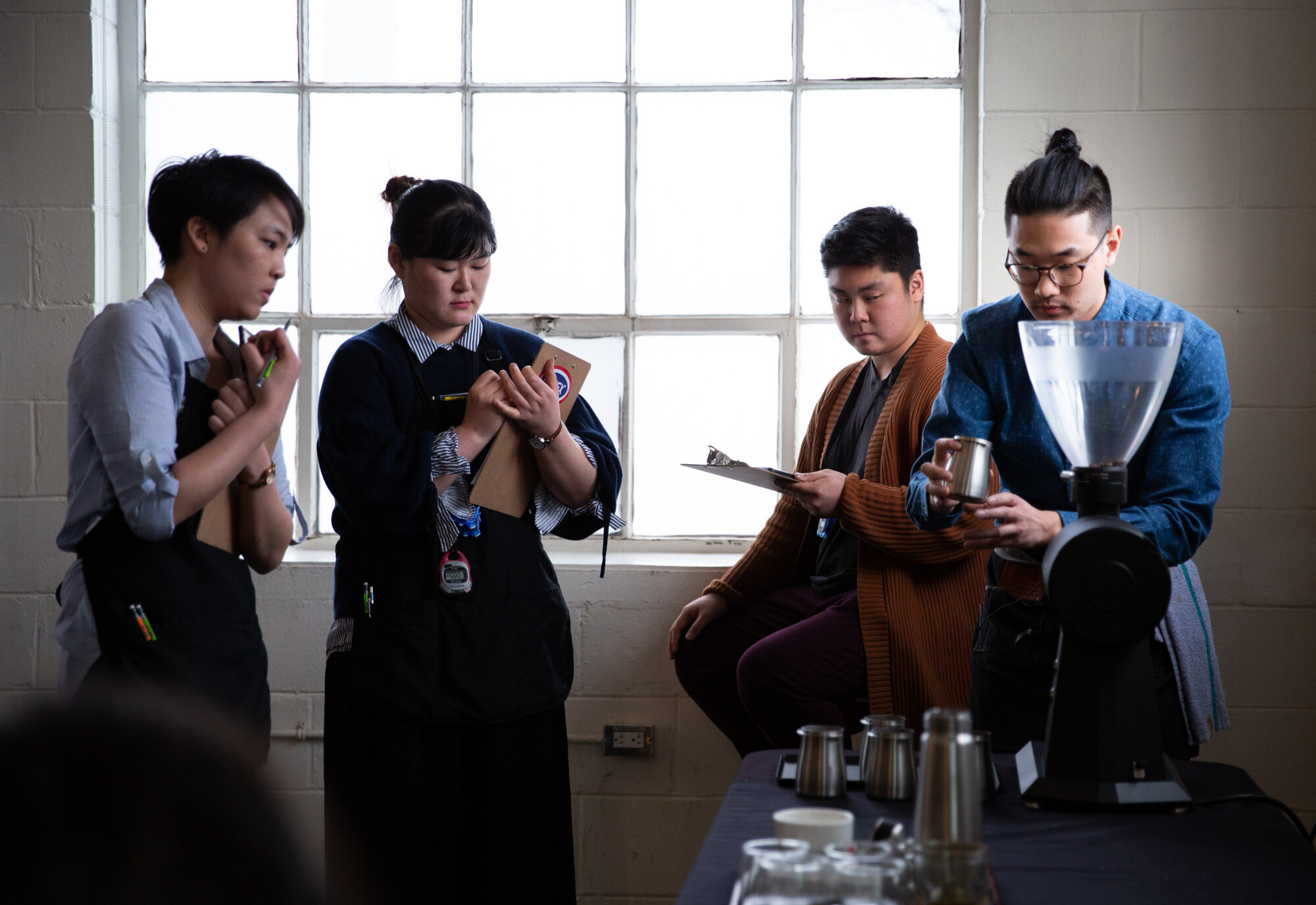Barbados in April
2022 was one heck of a year. I travelled to five new countries and in between daily news assignments, was lucky to go up north to remote communities in Manitoba twice for The Winnipeg Free Press. I read 25 books and they were mostly enjoyable. I also moved into a new apartment and worked on (and published) a few photo projects I’m proud of. I was fortunate to be given a handful of fantastic opportunities but I also made a lot happen for myself. I advocated for myself more this year and it worked.
Manitoba Keewatinowi Okmakanak Grand Chief Garrison Settee (second from right) and then Assembly of Manitoba Grand Chief Arlen Dumas (second from left) leave Cross Lake First Nation with their team. A house fire had taken the lives of three young children the night before and the chiefs were in the community to give their condolences.
In February, I was assigned to fly up north to Cross Lake First Nation, 520 km north of Winnipeg. It was one of the most difficult stories I would photograph for the year. A house fire had taken the lives of three young children and I was sent to document the aftermath. I don’t like that part of my job involves photographing human suffering but I am grateful for the trust I was given by the communities who welcomed me into their lives this year. I am honoured to have been able to witness so many important moments and given opportunities to try to convey the story or moment into photos.
The mother and father of the three children who passed away from a house fire in Cross Lake grieve during a ceremony to remember their children while the grandmother comforts them.
Manitoba Keewatinowi Okmakanak Grand Chief Garrison Settee (left) is photographed on the plane ride back from an emotionally exhausting day at Cross Lake First Nation, where the Chief is from. Three children perished in a house fire in the community.
Jennifer Hansen is photographed isolating at her home. She tested positive for COVID-19 after two years of avoiding it.
Mom Olena Hrushytska tears up at her son Sasha’s first day of school. The family arrived in Winnipeg in April after escaping the war in Ukraine. They’ve been busy rebuilding their lives. Hrushytska started two part-time jobs and Sasha started attending a local Ukrainian school.
Makaylah Gerard-Roussin’s family and family embrace during a day-long vigil at the ATV trail where the 20 year old’s body was found.
Residential school survivor Charlie Bittern poses for a photo in front of an archival image of a residential school class. In 1967, when he was 19, Bittern was forced by the principal of his school to run 80 km in a blizzard from Portage La Prairie to Brandon. “My lungs were burning, and my legs were going numb,” he says. Bittern has scars on his right calf, as a result of a station wagon driving into him when he dodged snow drifts.
Visual artist Bistyek poses for a photo in front of a wall of posters advertising his new show F—- War. As a child, he lived in Afrin, a Kurdish village in northern Syria, until war brought him to Winnipeg.
In the summer, I went on several road trips - to Mount Rushmore, North Dakota, Colorado, Nebraska and Wyoming; then to Saskatoon, Regina and Moose Jaw. Some places were new to me and were on the bucket list, but others were nostalgic trips. I found myself thinking about the person I was the last time I was there and how much had changed.
Canadian Foreign Affairs Minister Melanie Joly poses for a photo at the Human Rights Museum.
Max Kerman of The Arkells is photographed during a concert in Winnipeg.
Married couple Nancy Delgado and Yair Vanegas take part in Salsa Sundays in Winnipeg during the summer.
On a longer break, I travelled to Albania, Montenegro and Bosnia and Herzegovina. I had been wanting to do this trip since before the pandemic and drove from Tirana along the coast until I reached Himare, making photographs along the way. I hadn’t travelled as much as I used to in 2020 and 2021 because of the pandemic and now that travel is possible again, I am making up for lost time.
Highway 73 in South Dakota
Tourists gaze up at Mount Rushmore.
Back in Winnipeg, I enjoyed the warm summer and quickly got back into the hum of newspaper life. Soon, I would begin two long-term projects I had pitched earlier in the year.
A road trip through Barbados in April.
A sunbather enjoys the waves at a beach off the Ionian Coast in Himare, Albania.
A rest stop in the Ceraunian Mountains, Albania.
In the fall, I flew to Pukatawagan to document a fly-in dentist who had been serving the community for the last 14 years. The area had unfortunately experienced a wildfire over the summer which led to their power lines being damaged. They were operating off of generators and as a result, frequent loss of electricity was a common occurrence. It was a challenge for me to document that story because of the elements I was working in, the long hours I spent photographing and also because I was a guest of a community that historically has been portrayed negatively in mainstream media, if they receive any coverage at all. I did not want to give them a reason to distrust future journalists.
Ruby feels her jaw after an intense round of tooth extraction in Pukatawagan, Manitoba, where I photographed dentist Wally Mah (left) on the job.
On assignment in Pukatawagan, Manitoba
I am incredibly grateful for all of the fun and interesting assignments that I’ve had this year and thankful to everyone I’ve photographed who has graciously brought their energy and given their time to me during our sessions.
A boy in Pukatawagan, Manitoba
Now that we’re at the end of the year, I find myself reflecting on the kind of work I want to be spending time on in the new year. I’m also thinking about the places I want to explore. I travelled to my 71st (UN recognized) country this year and while I realize I have come far, I also know there are many places I have yet to travel to, and many I would like to go back to.
Kotor, Montenegro
Congrats to everyone who made it to the end of this year and thank you for joining me on this journey whether you are a colleague, editor or someone I’ve photographed. These past few pandemic years have not been easy. Hopefully in a few years’ time, we can look back and maybe smile at it all because we survived. See you in 2023!
Swimming with sharks somewhere off of Nassau, Bahamas








